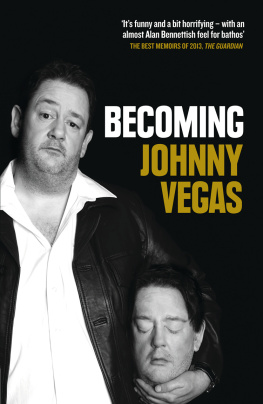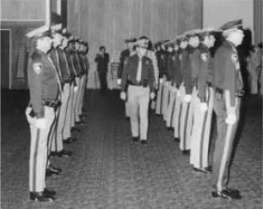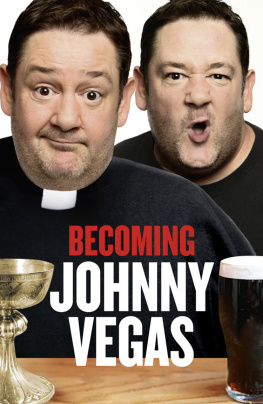
Simon & Schuster
1230 Avenue of the Americas
New York, NY 10020
Copyright 2019 by Richard Zoglin
www.SimonandSchuster.com
All rights reserved, including the right to reproduce this book or portions thereof in any form whatsoever. For information, address Simon & Schuster Subsidiary Rights Department, 1230 Avenue of the Americas, New York, NY 10020.
First Simon & Schuster hardcover edition July 2019
SIMON & SCHUSTER and colophon are registered trademarks of Simon & Schuster, Inc.
For information about special discounts for bulk purchases, please contact Simon & Schuster Special Sales at 1-866-506-1949 or .
The Simon & Schuster Speakers Bureau can bring authors to your live event. For more information or to book an event, contact the Simon & Schuster Speakers Bureau at 1-866-248-3049 or visit our website at www.simonspeakers.com.
Interior design by Ruth Lee-Mui
Jacket design by Jackie Seow
Jacket Photographs: Front by Entertainment Pictures/Alamy Stock Photo Back By A7A Collection/Photo 12/Alamy Stock Photo
Library of Congress Control Number: 2018057437
ISBN 978-1-5011-5119-4
ISBN 978-1-5011-5121-7 (ebook)

One
VEGAS MEETS ELVIS
I n a town addicted to building things, blowing them up, and then building them all over again, the New Frontier Hotel in 1956 was a fine example of Las Vegas progress. It was originally built in 1942 and called the Last Frontier, the second resort to open on what would become known as the Las Vegas Strip. Like its predecessor, El Rancho Vegas, the Last Frontier was a luxury resort in old Western garbThe Early West in Modern Splendor, as its promotional slogan put it. Rifles and stuffed animal heads decorated the hotel lobby; wagon-wheel chandeliers hung on chains from the timber ceilings; cow horns were mounted above the beds in the guest rooms. There was even an ersatz Western village next door, filled with frontier artifacts and populated by life-size papier-mch characters like Rabbit Sam and Sheriff Bill McGee.
But as ever more modern and luxurious hotels opened along the Strip, the Last Frontier decided it was time for an update, and in early 1955 the hotel closed down, gave itself a makeover, and reopened as the New Frontier. Gone were the stuffed animal heads and wagon-wheel chandeliers. Instead, visitors were greeted by a sleek new brick-and-glass faade, with a long canopy in front and a 126-foot-high steel-frame tower that bathed the hotel in colored lights at night. Inside, the old Western-themed showroom was transformed into the spiffy new thousand-seat Venus Room, with five tiered rows of booths and an expansive stage, with sides running to such length that the whole thing looks like a gigantic cinemascope screen, in the words of one awed reporter.
The hotels grand reopening in April 1955 was something of a disaster. Mario Lanza, the internationally renowned opera singer and movie star, was booked as the opening headliner, but he suffered a meltdown before the showan attack of stage fright compounded by drinkingand never set foot onstage. After an hours delay, the hotel announced that Lanza had laryngitis, and Jimmy Durante appeared as a last-minute replacement. (Too last-minute for Las Vegas Sun columnist Ralph Pearl, who filed his review early to make his deadline and raved about Lanzas phantom performance. Seldom in the history of this town, he wrote, has a star done a greater show or received a greater standing ovation.)
One year later the New Frontier played host to the Las Vegas debut of another, very different performer. He was nervous, too, but he did show upthough many in the audience were probably mystified as to what he was doing there. On April 23, 1956, Elvis Presley came to town.
The twenty-one-year-old rockabilly sensation from Memphis was in the midst of his phenomenal breakthrough year. Elvis Aron Presley was born on January 8, 1935, in Tupelo, Mississippi (in later years he began using the more common spelling of his middle name, Aaron), the son of a doting mother and a sporadically employed father who once served jail time for check fraud. The family moved to Memphis when Elvis was thirteen. In high school he was a greasy-haired, flashy-dressing misfit, who played the guitar and entertained in school talent shows. He began hanging out at Sam Phillipss Sun Records studio, making a few country and gospel recordings. When one of them, a rocking version of Arthur Crudups old blues song Thats All Right, Mama, caught on with country-music stations in the South, Phillips signed him to a recording contract. Soon Elvis was touring with the Louisiana Hayride and creating a frenzy among teenage audiences across the South. He was mainly a regional phenomenon until December 1955, when RCA Records bought out his Sun contract and launched a major campaign to sell America on this white country boy who sounded black, drove teenage girls wild, and was pioneering a new kind of musica revved-up mix of country and rhythm and blues that people were starting to call rock n roll.
He recorded his first RCA single, Heartbreak Hotel, in January. By April he had the No. 1 record in America; his gyrating TV appearances, on Tommy Dorseys variety show and The Milton Berle Show , were the talk of the country; and Paramount Pictures had signed him to a movie contract. Still to come was The Ed Sullivan Show (where he was shown, notoriously, only from the waist up), a string of chart-topping hits like Dont Be Cruel, Blue Suede Shoes, and All Shook Up, and a virtual revolution in popular music and American culture.
But first, Elvis played Vegas.
The idea was his manager Colonel Tom Parkers, and not a very good one. Elviss frenetic rock n roll performances, which were causing such a sensation in the rest of the country, were hardly geared for a crowd of middle-aged Vegas showgoers. Yet there he was at the New Frontier, touted as The Atomic-Powered Singer (in a town where people could watch real atomic tests taking place in the Nevada desert nearby), the extra added attraction on a bill headed by Freddy Martins orchestra and comedian Shecky Greene. Elvis got paid $15,000 for the two-week gig, and the Colonel asked for it in cash. No check is any good, he said. Theyre testing an atom bomb out there in the desert. What if someone pushed the wrong button?
The audience at the New Frontier must have thought someone had pushed the wrong button. Freddy Martin, whose sweet music orchestra was known for its pop versions of classics like Tchaikovskys Concerto in B-flat, opened the show with several of his instrumental hits and a medley of songs from the musical Oklahoma! Next came Shecky Greene, a Chicago-born comedian just gaining notoriety for his raucous Vegas lounge act; Variety called him easily the talking point of this show.
Elvis was the closing act. Backed by his three-piece rhythm groupguitarist Scotty Moore, bassist Bill Black, and drummer D. J. FontanaElvis performed four songs and was onstage for just twelve minutes. The response was polite at best. One high roller sitting at ringside, according to a witness, got up midway through the show, cried, What is all this yelling and noise?, and fled to the casino. The critics werent much kinder. Elvis Presley, coming in on a wing of advance hoopla, doesnt hit the mark here, wrote Bill Willard in Variety . The loud braying of the tunes which rocketed him to the big time is wearing, and the applause comes back edged with a polite sound. For the teenagers, hes a whiz; for the average Vegas spender, a fizz. Newsweek said the young rock n roller was like a jug of corn liquor at a champagne party. For Elvis and his backup group, accustomed to the pandemonium they were causing in concerts across the country, the response was sobering. For the first time in months we could hear ourselves when we played out of tune, said Bill Black. They werent my kind of audience, Elvis would say later. It was strictly an adult audience. The first night especially I was absolutely scared stiff.















